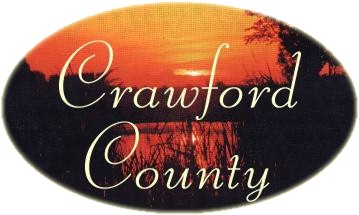Crawford County, KS
 From coal mines to railroads, socialism to labor union, and prohibition to bootlegging, the history of Crawford County, Kansas is as colorful as the people who call it home. Often known as "The Little Balkans," Crawford County welcomed 31,000 immigrants from 52 different nationalities between 1880 and 1940.
From coal mines to railroads, socialism to labor union, and prohibition to bootlegging, the history of Crawford County, Kansas is as colorful as the people who call it home. Often known as "The Little Balkans," Crawford County welcomed 31,000 immigrants from 52 different nationalities between 1880 and 1940."The Europeans particularly brought to the coal field a rich 'cultural baggage' of different languages, religions, cuisines, backgrounds and lifestyles. Because of the diversity, ethnicity, and civil disorderliness, the coal field became known as the "Little Balkans' of the state," William E. Powell, "The Little Balkans of Kansas: A Geographical View."
From the time the first settlers came in the 1850's until prohibition ended, Crawford County was, for the most part, a sea of turmoil. Its history, like much of the West, is the story of pioneers, Indians,and railroads. However, what has set our county apart from most is the story behind the rich abundance of "black rocks," as termed by Native Americans.
Success created history as the coal boom began at its peak, 14,000 miners were digging seven million tons of coal annually in sixty-five deep mines.
Strip mining also became abundant as massive steam shovels took gigantic bites out of the earth, uncovering seams of coal with a smaller work force. The "strip pits" seen throughout the area are continuing evidence of the days of strip mining. Fortunately, nature has now covered the ugly scars with vegetation and the water in many of the pits has been stocked for ideal fishing.
You may be curious as to why there are so many little communities throughout Crawford County. The miners lived close by the mines they worked, thus creating small camps all over the county. Imagine that at its peak, the county consisted of as many as 2,000 camps! The camps were made up of the miners' homes where they and their families lived. Most camps had one school and one church. Some of the larger camps may have also had a theater, bank, electric lights and "paved" streets. A lot of the miners were paid in script, so they had to buy from the company stores. (Prices were usually higher, too.)
Today, a house or two may be all that stands of a camp. Cato, the earliest town in the county and is an example of a town that faded as fast as it flourished. Many of the town buildings are still standing today, but have been vacant for years.
Explore Crawford County
Crawford County State Lake
Crawford County State Lake is a public fishing area. The marina offers boat ramps, picnic facilities and swimming beach. Camping - 63
Pittsburg, KS RecreationMined Land Wildlife Areas
Located in Crawford, Cherokee, and Labette Counties, the Mined Land Wildlife Area (MLWA) encompasses about 14,500 acres in 46 scattered tracts. Most of this wildlife area was once surface mined for coal. About 200
Pittsburg, KS Wildlife AreasFranklin Community Center & Miners Hall Museum
The Franklin Community Center & Museum was built shortly after the devastating tornado of 2003 which destroyed much of the community including the former Franklin Community Hall. The Miners Hall Museum is an exhibition located within the Franklin Community Center &
Franklin, KS MuseumsHotel Stilwell
The Hotel Stilwell was built in 1880 and placed on the State and National Registers of Historic Places in 1980
Pittsburg, KS Historic BuildingsFisk Opus 106 Pipe Organ
The Opus 106 Pipe Organ is a superb mechanical-action pipe organ built by one of the finest organ builders in the world. It arrived on the Pittsburg State campus in March, 1995, and was presented to the university in inaugural festivities, October 1995.
Pittsburg, KS ArtsBison Herd
The Bison heard is on display year round. Stop and view the bison herd as you imagine earlier days when the plains were filled with these magnificent animals. Fun Fact: A bison has 14 pair of ribs instead of the 13 pair found in the
Pittsburg, KS Natural AttractionsHuey Helicopter & Veteran's Memorial
On April 15, 1995, a formal ceremony dedicated a Huey Helicopter to its new home on the Southeast corner of the Crawford County Courthouse lawn. In addition to the Huey, a granite replica of the Vietnam Wall is engraved with the names of the 777
Girard, KS MemorialsPittsburg State University
Pittsburg State University… Where People Succeed Pittsburg State University has four colleges consisting of many reputable and outstanding academic programs:
Pittsburg, KS CollegesBig Flag Veteran Memorial
Drop by an see one of the nation's largest American Flags (30' x 60' - 130' high). While you can see the flag from your vehicle, you really must stand under the Big Flag to appreciate its true size, 130 feet high above the Kansas prairie honoring all war veterans.
Girard, KS MemorialsPittsburg Public Library
The Pittburg Public Library, listed on the National Register of Historical Landmarks, is an example of the Prarie School of Architecture. Built in 1910
Pittsburg, KS Carnegie Libraries